Economics of extending days on feed:
live, carcass or grid sales
By Dr. Grant Crawford
Continued pressure on cattle producers regarding high feed and input costs leads feedlot managers to evaluate days-on-feed (DOF).
As cattle grow and mature in the feedyard, the composition of gain changes. Fat gain increases and protein gain decreases proportionally for each pound of weight gained. Because fat is more energetically dense than protein (primarily water), total gain of live and hot carcass weight slows down as the animal matures.
Increased DOF improves quality grade but also increases risk of carcass discounts due to excess weight and/or increased yield grade. Additional DOF offers a different value structure for grid sellers versus live sellers due to carcass transfer and composition of gain.1
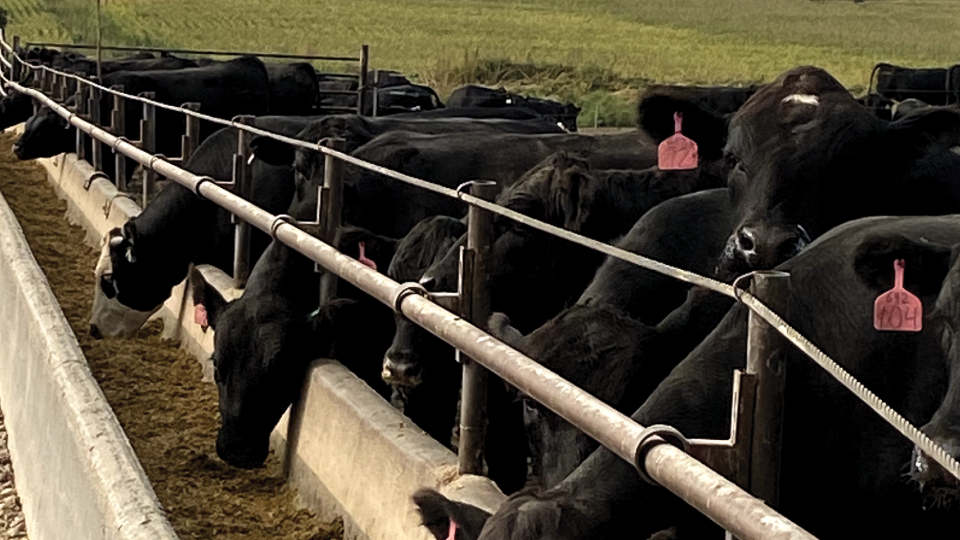
To find the balance of optimum feed efficiency to maximize return, look at historical closeouts and credible serial slaughter research to see how different days on feed affect gain and carcass composition.
A recent serial harvest trial examined extended DOF for 7,000 head of cattle.2 Four groups of feedlot cattle were fed for 166, 180, 194 and 208 days.
Costs for dry matter intake (DMI), average daily gain (ADG), feed-to-gain ratio and cost-of-gain were calculated for each time period. Using the feed costs and yardage (fixed and non-feed operating costs), a total cost estimate was attained to evaluate the net revenue.
The goal was to analyze the economics of feeding cattle longer when sold on a live, carcass or grid basis based on current market conditions. Premiums and discounts for yield grade, quality grade and overweight carcasses were applied to determine profitability.
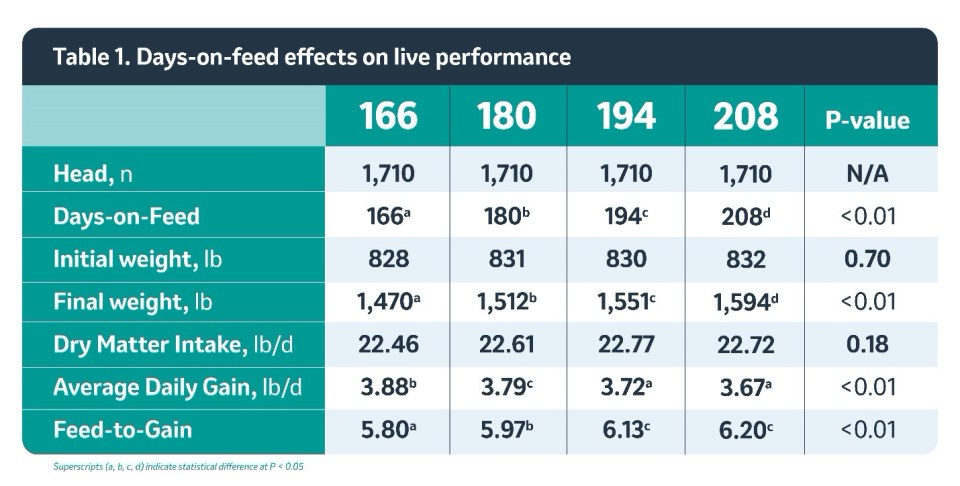
Live sale economics
- On days 166-180, total costs were $65.35/head. With an increased revenue of $57.96/head (42 lbs at $1.38/lb), the net incremental revenue was -$7.39/head.
- On days 180-194, total costs were $66.43/head. With an increased revenue of $53.82/head (39 lbs at $1.38/lb), the net incremental revenue was -$12.61/head.
- With these data and feed and cattle cost assumptions, there was no value to feeding these cattle past their first harvest endpoint when selling on a live basis.
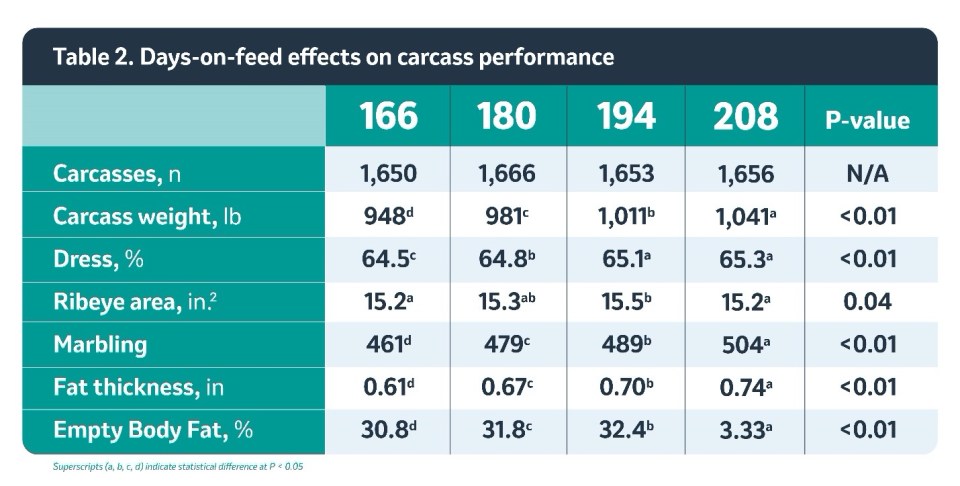
Carcass sale economics
- On days 166-180, total costs were $65.35/head. Carcass average daily gain was 2.20 lbs/day. With an increased revenue of $72.60/head (33 lbs at $2.20/lb), the net incremental revenue was $7.25/head.
- On days 180-194, total costs were $66.43/head. With an increased revenue of $66/head (30 lbs at $2.20/lb), the net incremental revenue was -$0.43/head.
- With these data and feed and cattle cost assumptions, there was a $7.25/head additional return for feeding 14 additional days. After that, there was no added return for continuing to feed these cattle when sold on a carcass basis.
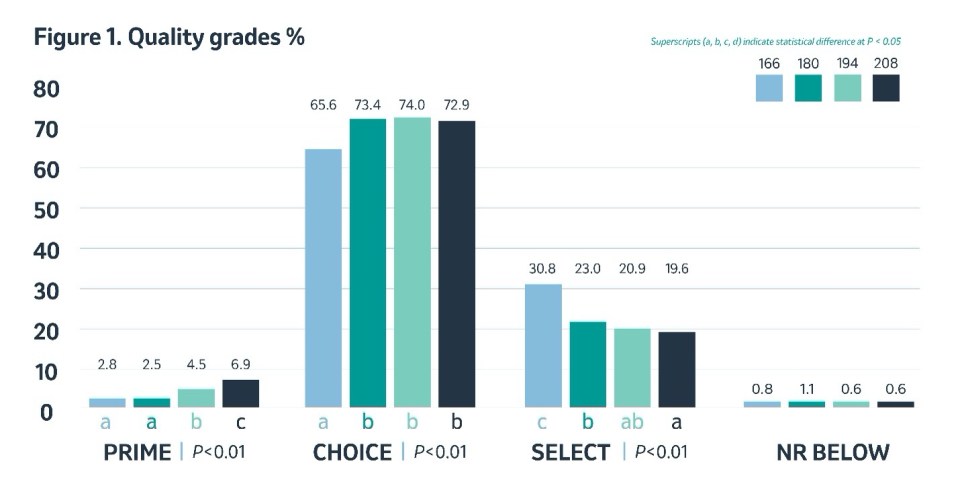
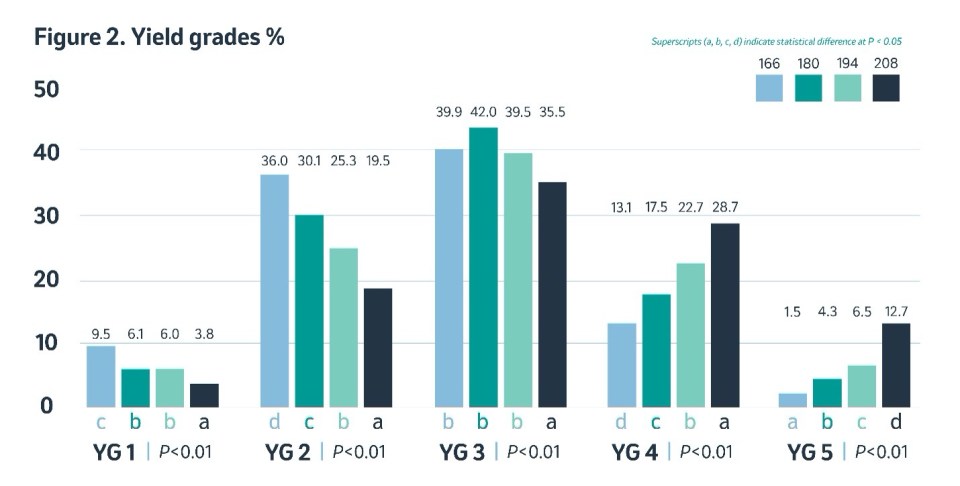
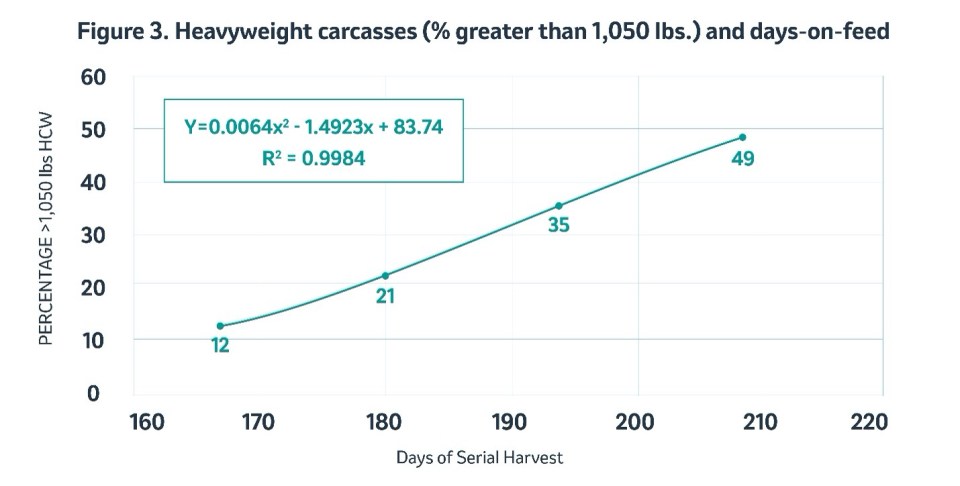
Grid sale economics
- On days 166-180, total costs were $65.35/head. With an increased revenue of $59.24/head, the net incremental revenue was -$6.11/head.
- On days 180-194, total costs were $66.43/head. With an increased revenue of $38.69/head, the net incremental revenue was -$27.73/head.
- With these data and feed and cattle cost assumptions, there was no value to feeding these cattle past their first harvest endpoint when selling on a grid basis. Though quality grade improved and provided greater premiums, the discounts associated with yield grades 4 and 5 and overweight carcasses led to reduced returns when extending days on feed.
Key findings
Increasing DOF increased HCW but decreased ADG and gain-to-feed ratio as fat deposition increased. While increasing DOF increased HCW and profit potential, there was added risk of yield grade discounts.
The results support extended DOF for carcass sales, but it’s important to pay close attention to yield grades and overweight premiums and discounts. The economics show that if selling live or on a grid, extending DOF presents very little to no opportunity for increased revenue, based on this data.
Implants and the feeding period
Implants are critical tools to improve cattle feed efficiency, and using the right implants can achieve an ROI during each phase of production.
Implanting is one of the most researched, proven and consistent cattle production technologies on the market. These products have a tremendous return on investment by shifting the growth curve of cattle, resulting in improved efficiency through heavier, leaner and larger-framed animals.3
Implants offer significant value for feedlot cattle, helping achieve higher average daily gains and 10% to 15% greater feed efficiency.3 Implants with extended activity during the final finishing period help add carcass weight while maintaining carcass quality.
One field study1 observed that implanting heifers with an extended-release implant resulted in similar final BW and HCW versus a more aggressive implant strategy. Researchers concluded that implant strategies substantially increase HCW and revenue and serve as important conduits of feed efficiency across all DOF. Other heifer studies have shown a slight advantage to an aggressive implant strategy compared with an extended-release implant.4 This advantage should be compared against the costs of reimplanting cattle when choosing an implant strategy.
Conclusion
Using serial slaughter data helps feedyards make informed decisions on the appropriate number of DOF to match their cattle and marketing opportunities. Consult with your nutritionist to develop a feeding and implant program to meet your profitability goals.
Resources
- Ohnoutka et al. Evaluation of coated steroidal combination implants on feedlot performance and carcass characteristics of beef heifers fed for constant or varying days on feed. App. Anim. Sci., Volume 37, Issue 1, 2021, Pages 41-51, ISSN 2590-2865, https://doi.org/10.15232/aas.2020-02013.
- Martinez et al. The effect of three implant programs on performance, carcass outcomes, and activity of finishing steers fed different days on feed. Proceedings, Plains Nutrition Council Spring Conference, 8-9 April 2021, San Antonio, Texas, Page 110, https://theplainsnutritioncouncil.com/web/wp-content/uploads/2022/02/2021-Plains-Nutrition-Council-Proceedings.pdf.
- Guiroy et al. The effects of implant strategy on finished body weight of beef cattle. J. Anim. Sci., Volume 80, Issue 7, July 2002, Pages 1791-1800, https://doi.org/10.2527/2002.8071791x.
- Smith et al. A pooled analysis of six large-pen feedlot studies: effects of a noncoated initial and terminal implant compared with a single initial and delayed-release implant on arrival in feedlot heifers. Trans. Anim. Sci., Volume 4, Issue 3, July 2020, txaa109, https://doi.org/10.1093/tas/txaa109.
Find more content for your beef operation.
About the author

Dr. Grant Crawford, Ph.D.
Associate Director Cattle Technical Services,
Merck Animal Health
